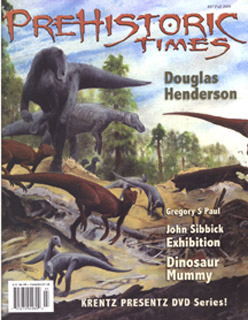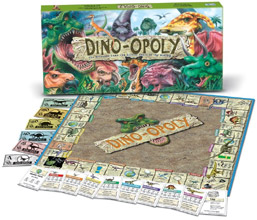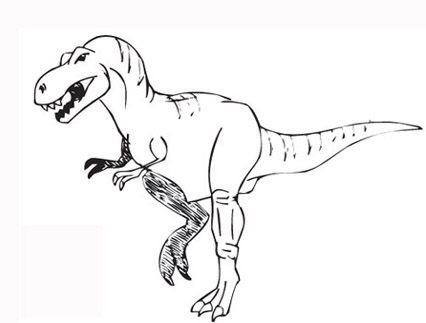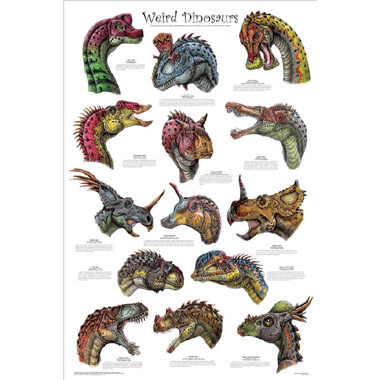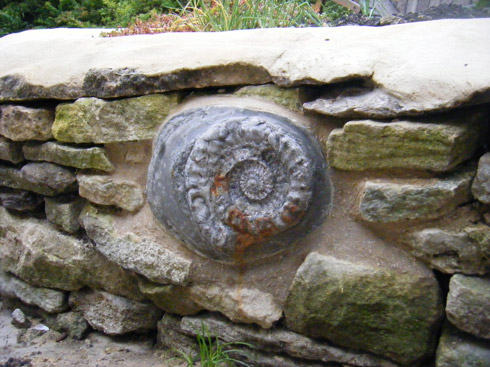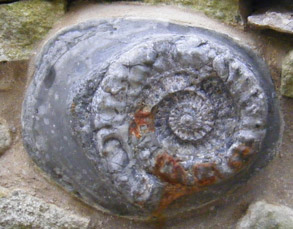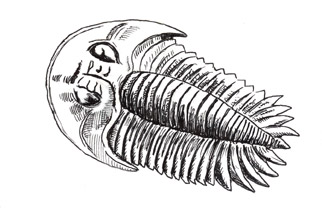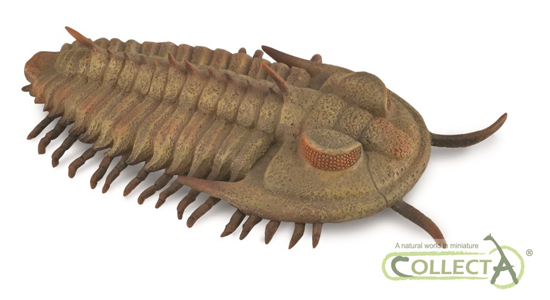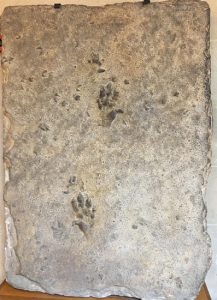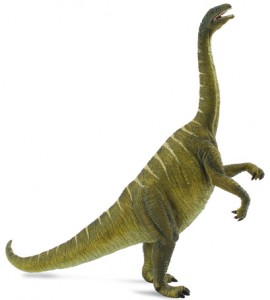Hadrosaur Headgear helped Communication for these Herding Herbivores
A new study has just been published into the sound resonating capabilities of ornate head crests of 4 genera of lambeosaurine hadrosaurs, building on earlier American studies from the 1980s and 1990s, time to look at some musical lambeosaurines.
For many years scientists have puzzled over the exact function of the duck-billed dinosaur crests. Hadrosaurs are split into two main groups, the hadrosaurines (example being Edmontosaurus) animals with small or no head crests and the lambeosaurines (Corythosaurus, Charonosaurus etc.) with flamboyant crests.
Extensive Hadrosaur Fossils
From the extensive hadrosaur fossil remains now known, it can be seen that the size and shape of the crest changed as animals grew and reached maturity. Also, some lambeosaurine species seem to show differences in crest shape and size between species. A number of fossil skulls of the species Parasaurolophus walkeri have different sized crests and this may indicate that the males had larger more prominent crests than females. There are a number of studies and reviews being conducted at the moment to try to identify medullary bone in the hadrosaur fossil record. Finding evidence of this particular type of bone tissue in duck-billed dinosaurs with their skulls and crests preserved would help scientists to identify females amongst the fossil record.
A Typical Hadrosaurine Fossil Specimen
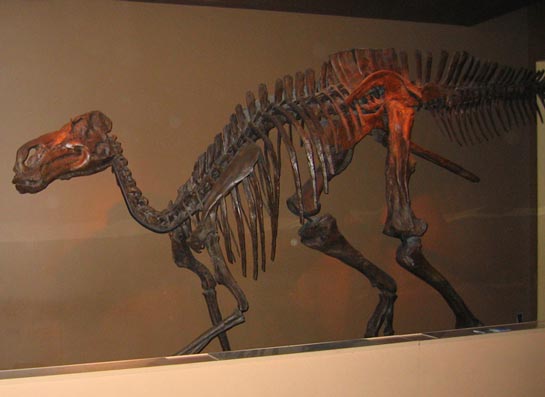
After much careful fieldwork and preparation a fossil skeleton is ready for display. A typical hadrosaurine fossil specimen. Picture credit: Everything Dinosaur.
Picture credit: Everything Dinosaur
Medullary bone is a thin layer of very vascular bone that is formed in modern birds during ovulation. The formation of this bone type is linked to high levels of the female hormone oestrogen. This type of bone is formed in the leg bones and exists until the last egg has been laid. It is then re-absorbed by the body. This tissue provides a source of calcium for the creation of eggshells. The presence of fossilised medullary bone structures may help scientists to pick out the girls from the boys. Using this data, a better understanding of head crest shape and morphology could then be derived.
Musical Lambeosaurines
This new research carried out by a team of Canadian and American researchers, and published in the scientific journal “The Anatomical Record”, concludes that duck-billed dinosaurs were capable of producing a variety of sounds, and the size and shape of the crest influenced the sound produced. They go on to theorise that as these dinosaurs grew and reached sexual maturity their voices altered. The larger crests of mature animals would help make different sounds compared to the voices of juveniles.
In a way, this is similar to our own species in which the male voice “breaks” prior to the onset of adulthood.
Building on earlier research into hadrosaur vocalisation, the team were able to study crests and nasal passages in great detail using CAT scans to determine the internal structure of these ornate items of dinosaur headgear. In addition, studies of casts from hadrosaur brain cases were included in the work to help clarify the relationship between these crests and the olfactory part of the brain (sense of smell). The team’s results seems to confirm one of the earlier theories, that the head crests were used for vocal communication — not to enhance the sense of smell.
And if the research is validated, it would indicate that when a lambeosaurine made calls, air would travel through the nasal passages enclosed by the head crest. Since the sizes and shapes of head crests (and nasal passages) differed among lambeosaurine genera and amongst individuals of a species, this would be evidence that each dinosaur had its own distinct voice.
“Dinosaurs vocalised through their mouths, but because the nose connects to the mouth, the nasal passages act as resonance chambers,” commented researcher Lawrence Witmer of Ohio University’s College of Osteopathic Medicine, one of the authors of the scientific paper.
Four Genera of Lambeosaurine Studied
Four genera of lambeosaurine were studied – Parasaurolophus, Corythosaurus, Hypacrosaurus and Lambeosaurus. The addition of Hypacrosaurus, regarded as one of the most primitive lambeosaurines discovered to date can be explained by the fact that several near complete fossil specimens of this dinosaur have been found and a number of juvenile specimens are known, permitting scientists to study the growth and development of this particular dinosaur.
By examining the brain-cases of these dinosaurs the scientists were able to speculate on the relationship between the crest and certain specific elements of brain function.
“The shape of the brain can tell us a lot about what senses were important in a dinosaur’s everyday life, and give insight into the function of the crests,” said David Evans, a palaeontologist at the Royal Ontario Museum and the University of Toronto, the lead author of the research paper.
In addition, the team examined such systems in dinosaurs’ closest living relatives, birds and crocodilians.
Their study indicated that the brain region linked with all things olfactory was relatively small and underdeveloped in the lambeosaurines, suggesting, the researchers say, that the dinosaurs’ head crests did not evolve to improve smell. Instead, the researchers think the dinosaurs used the nasal passages within the crests to make loud bellowing sounds that could have been used to call for mates, express social dominance or as alarm calls to warn others of the approach of predators.
“We have a sense that these animals used low frequency sound, so, very deep sounds that actually travel long distances and they may have been able to use those to communicate”.
The discovery of one of the delicate sound conducting bones of a Corythosaurus (the columella) indicates that these animals may have had sensitive hearing, perhaps more capable of detecting low frequency sounds than many mammal species.
The picture this research paints is of a large herd of animals of different ages, sizes and different levels of maturity moving along filling the Cretaceous air with loud honks, bellows and grunts. Younger animals would probably have made higher pitched sounds, chirps and squeaks. Vocalisation may have had a number of important functions within these groups, but it is also worth noting that the crests themselves would have also been used as a form of visual signalling device between individuals.
The joint Canadian and American team re-examined earlier work on the morphology of hadrosaur brains and their new research indicates that some areas of the brain, for example, those linked with social behaviour, problem-solving and higher thought were quite large. This would have helped these animals decipher complex messages in the form of visual signals and vocalisations.
The research team has stated:
“What it suggests is that they indeed did have the brain power to pull off some of these sophisticated behaviours,”, in addition, “that they probably did communicate in perhaps fairly subtle ways and they could make sense of it.”
The subtle differences in crest size, such as those seen in the three species of Parasaurolophus currently recognised would mean that different species would have produced slightly different sounds.
To read an article focusing on the work into hadrosaur vocalisation in the late 1990s: Article on Dinosaur Sounds.
This new study does not detract from the work of other research teams, but places a greater emphasis on the crest shape of lambeosaurines to produce different types of sounds. It links the study of these ornate crests with brain structure. It is possible that these impressive features served a multitude of purposes. As they were hollow tubes connected to the nasal passages they could have modified the air that was breathed, perhaps helping to retain moisture or warm the air before it entered the respiratory system. In some instances, that part of the brain that dealt with the olfactory function does seem to be closely associated with the crest, the crests may have helped these large animals detect slight variations in scents wafting on air currents. This may have helped them find sources of food or assisted with their migrations. After all, these huge animals living in massive herds would have consumed a great deal of plant material and so these animals would probably have been on the move constantly in search of fresh feeding grounds.
It is possible that the head crests of hadrosaurs played a function in all these areas. Perhaps the bigger mystery is why the hadrosaurines such as Edmontosaurus had no crests or solid ones formed by the extension of the nasal bones.
Everything Dinosaur stocks a wide range of duck-billed dinosaur models, including lambeosaurine replicas in the: PNSO Age of Dinosaurs model range.


